 Pulpitis is a dental disease caused by inflammation in the pulp - the vascular bundle of the tooth. One of the reasons for the occurrence is caries in neglected form.
Pulpitis is a dental disease caused by inflammation in the pulp - the vascular bundle of the tooth. One of the reasons for the occurrence is caries in neglected form.
Pathogenic microorganisms falling inside the destroyed tooth, lead to the onset of the inflammatory process of the pulp. In the event that the patient does not take any measures to eliminate the disease, then there is a high probability of developing pulpitis and concomitant diseases.
Contents
- Do not let the process drift
- Biological methods
- Surgical therapies
- Obsolete
- methods How modern dentists work
- Step-by-step surgical treatment of
- Nuances and tips
- Possible complications
Do not let the process go by itself
Today, many people prefer not to notice the problem untilit gives an opportunity to work and live a familiar life. The pain in the teeth is drowned in anesthetizing, so the pulpitis is open to all pathways to development, as bacteria and harmful microorganisms are not removed from the gum tissue.
Over time, irreversible changes occur within the destroyed tooth and adjacent gum tissues, which sooner or later will cause inflammation of the root( pulp), accompanied by the formation of pus.
In the event that there is a lot of pus, it will start to come out, which will cause the formation of a flux, which externally manifests itself in the 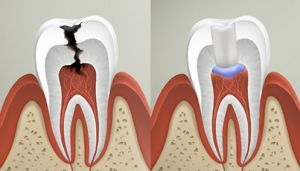 swelling of the cheeks of varying degrees of intensity. In complex cases, a violation of the symmetry of the face is observed.
swelling of the cheeks of varying degrees of intensity. In complex cases, a violation of the symmetry of the face is observed.
Timely treatment of pulpitis is also necessary in order to prevent the formation of phlegmon - a purulent inflammatory process that entails life-threatening complications:
- lesion of the jaw bone tissue;
- affection of facial nerves;
- development of abscesses;
- apical periodontitis;
- blood poisoning.
It is easy to prevent complications - it is enough to start timely treatment. Modern methods of treatment of pulpitis practically do not bring to the person unpleasant and painful sensations, therefore to postpone visiting of the doctor - the stomatologist does not follow.
If the process of development of the disease has not passed into a neglected form, then the doctor can save the nerve, that is, do not remove it from the channel, but in most cases partial / full removal is performed.
Existing today and successfully applied in practice methods of treatment of pulpitis can be divided into two large groups: conservative or biological and surgical.
The biological method aims to remove the resulting inflammation without resorting to radical measures - removing the root completely or partially. At the heart of biological methods are medicines, and physiotherapeutic effects on the root of the tooth and gum tissue are also applied. Surgical methods - removal of the root.
Biological methods
The treatment is aimed at full preservation of the root and its functions. This is possible only at reversible stages of the process - without the occurrence of complications.
The main indications for the choice of biological therapy:
- acute focal pulpitis;
- fracture of the crown with root damage;
- chronic pulpitis;
- age to 28 years;
- initial stages of caries.
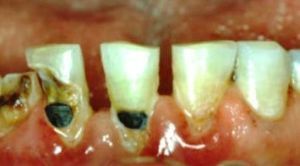 Biological treatments include patching, which is divided into a direct and indirect coating of the inflamed root.
Biological treatments include patching, which is divided into a direct and indirect coating of the inflamed root.
Indirect method is used when there is no possibility of complete cleansing of the bottom of the cavity affected by caries, as the pulp chamber can be damaged, thereby further damaging the health of the oral cavity.
Direct application of the therapeutic agent is selected in the event that the pulp is completely or partially uncovered.
Sometimes there is a need to supplement the intervention with physiotherapy procedures, as they allow you to quickly and painlessly remove inflammation and the effects of suppuration. This method of treatment is recommended to be performed first of all for children under 12 years of age, who have not yet fully formed due to the age of the apex of teeth.
Surgical methods of therapy
In most cases, we have to talk about the complete removal of the root, that is, the application of a surgical method for treating pulpitis.
Modern dentistry performs all the necessary actions quickly, and the patient himself is under local anesthesia while the doctor is working, so treating the tooth pulp does not hurt.
The root of the tooth can be removed, either partially or completely, depending on the degree of tooth decay and the stage of the disease development.
Also, the surgical method of treatment implies the imposition of a special devitalizing paste, the feature of which is that it contains arsenic in its composition.
Despite the development of dental science with the help of this toxic substance, it is possible to avoid more serious consequences.
After this, the stage of endodontic treatment of pulpitis occurs - the filling of the tooth canals with a special medical composition. The next step on the way to recovery is X-ray, which is necessary to check whether the doctor correctly applied the composition.
Then the usual seal is applied. In the event that the tooth is completely destroyed, then a pivotal caulis insert is used, which makes it possible to partially repair the walls of the tooth, but the root itself, if it began to fester, can not be saved.
Stages of treatment of pulpitis:
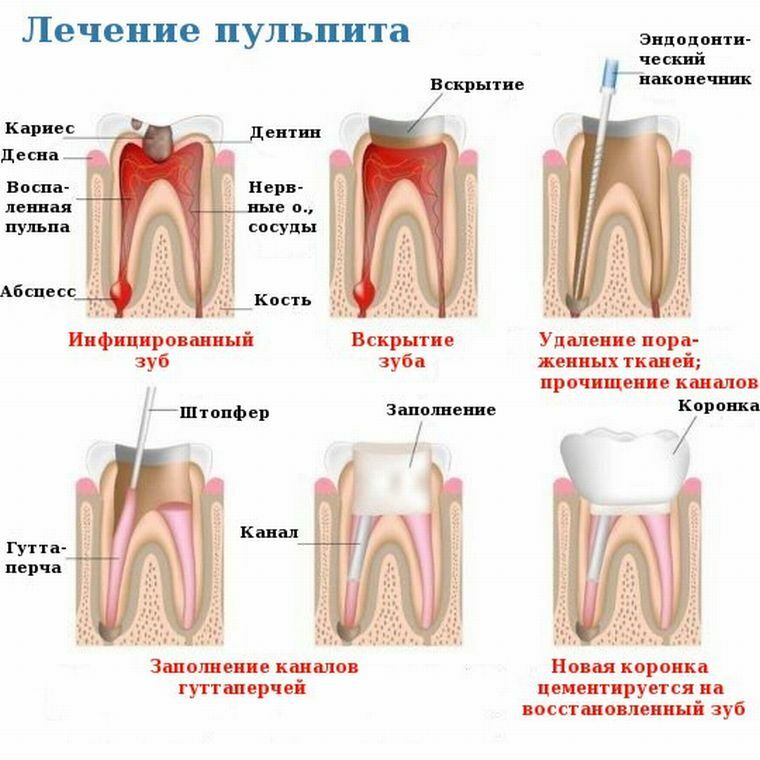
Outdated methods of
Resorcinol-formalin method is considered obsolete and not currently used in most clinics for treating pulpitis.
A side effect is the appearance of a pink or red color of the enamel of the teeth. It is important to remember that it is almost impossible to restore the health of the tooth after such an intervention.
Today, this method has been replaced by washing the canals and applying a medicinal paste. In addition, the method using arsenic is considered obsolete, since it is considered poisonous and harmful to health.
How do modern dentists work?
Medicine does not stand still, dentistry is also developing. Modern methods of treatment of pulpitis do not cause unpleasant sensations, pain, and also do not require large expenditures of personal time.
As we have already mentioned, biological and surgical methods of therapy are distinguished.
In addition, laser and physiotherapy are successfully used. It is important to remember that the biological method can only be used if the pulpitis is detected at an early stage, when the tooth and root are not completely destroyed. 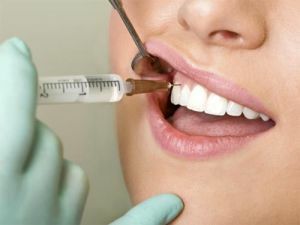
Treatment without nerve removal requires the following actions:
- use of special drugs;
- holding an X-ray.
Additionally, the doctor applies a layer of calcium-containing drugs to prevent the destruction of the tooth walls. After that, he seals the tooth with a temporary filling.
Step-by-step surgical treatment of
Surgical treatment of pulpitis involves partial or complete removal of the root. It is used when conservation of the root is not possible.
Today, arsenic-free products are used so that exposure to pulp is not harmful. Accordingly, the first stage of treatment is the application of the drug layer. Treatment is carried out under anesthesia, so the pain at each stage is completely absent.
Removal of the root or part of it is done using special tools, sometimes, before you start the operation, you have to cut the gum.
The stages of pulpitis treatment depend on the condition of the tooth, on the complexity of the inflammatory process. It is important to remember that if the inflammation develops, the doctor conducts the sanation of the oral cavity, and the treatment itself is performed for several visits.
The purpose of the image is a mandatory step, as well as the production of the seal.
Also used:
- The laser is a modern treatment method that does not involve the use of a drill. The peculiarity of the method is the preservation of the root viability of
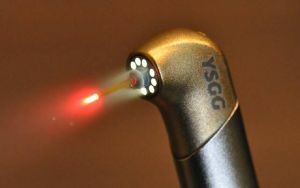 .In addition, it allows you to remove inflammation and speeds up the processes of tissue repair. Significant improvement is noted already 24 hours after the procedure.
.In addition, it allows you to remove inflammation and speeds up the processes of tissue repair. Significant improvement is noted already 24 hours after the procedure. - Depophoresis is a procedure that allows to eliminate inflammation in the root canals. The method allows the effective treatment of retrograde pulpitis. Another modern way to combat this disease is physiotherapy. It can be used as an independent way to eliminate pulpitis, and as an auxiliary, when it is required to eliminate inflammation and speed up tissue repair. It is important to remember that in this procedure, it is necessary to monitor the time, since excessive exposure is not recommended.
In order for the treatment to be successful, it is necessary to follow simple recommendations. A patient who is in pain should go to the dentist as soon as possible to exclude the possibility of inflammation and the formation of pus in the pulp.
It is also recommended to rinse the oral cavity with special medications to reduce the number of bacteria.
Nuances and tips
The main advice - do not delay the referral to the doctor. The nuances of therapy depend on the stage and rate of development of the disease, as well as on its variety. It is compulsory to follow the recommendations of the dentist.
It is important that the inserted seal is well hardened, so eating food and water is allowed only 1-2 hours after completion of treatment.
After treatment, it takes a few days to withstand a light diet - exclude sweet, sour and flour, jam and chewing gums, as they can damage the installed seal.
Possible complications of
If pulpitis is triggered or mistakes were made during treatment, complications may occur. The main of them are:
- periodontitis - the reason is a poor-quality formulation of the seal;
- inflammation and suppuration.
If any of these complications occur, you should immediately consult a doctor. At home, trying to get rid of them can not be, because a person does not have sufficient knowledge and can only worsen the situation.
